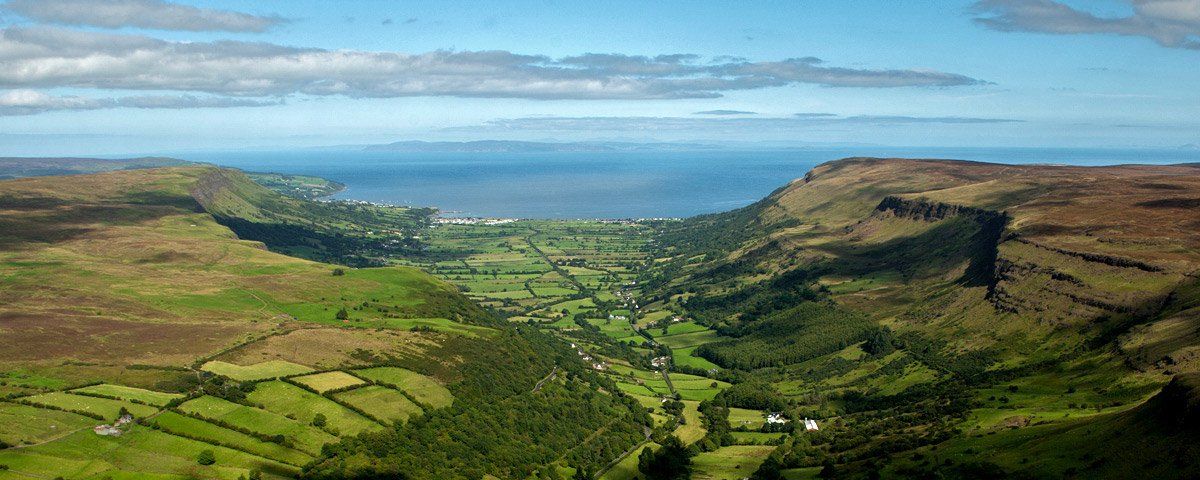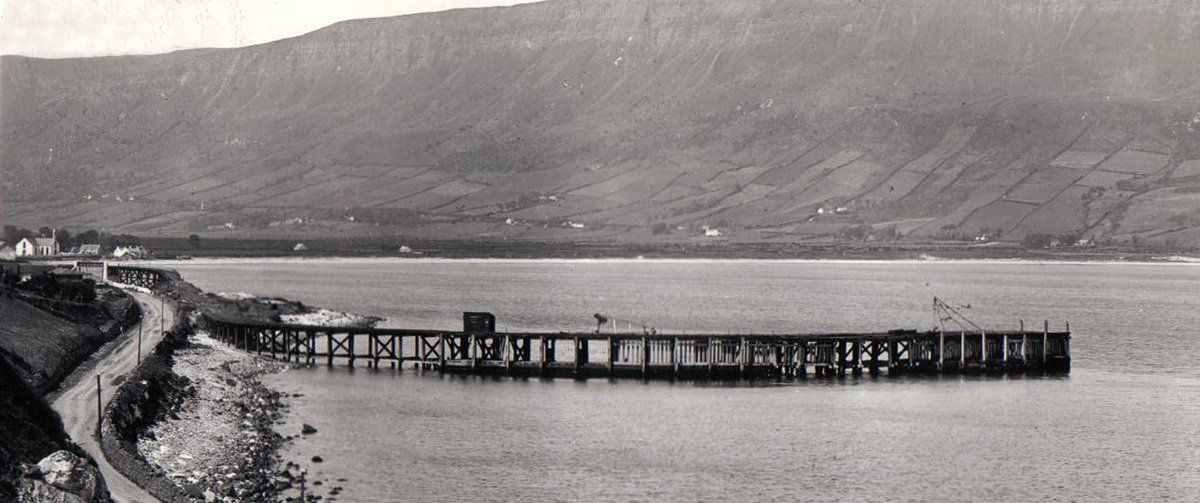Mineral Railway
The Glenariff Iron Ore and Harbour Company began operating the railway line in 1873, it was the first and highest operational narrow gauge (3 feet) railway in Ireland. It was built to transport iron ore from several mines in the townland of Cloughcorr at the top of the glen down toCarrivemurphy Pier where it was loaded manually by chute onto schooners and exported to supply iron works in Scotland and England. The railway was cut down the south-eastern side of Glenariff and ran for a distance of approximately 4 miles (6.5km), crossing over the coast road by the White Arch, the piers of which you pass through when entering or leaving Waterfoot. The broken and storm battered remains of the old quay can still be seen on the shore.
Close to the White Arch and visible from the road are the remains of the limestone engine shed (now a community facility) and nearby a row of houses known as ‘The Terrace’ which were built for the miners. There were plans proposed by William Trail of the Giants Causeway, Portrush and Bush Valley Railway and Tramway Company to connect the Glenariff line with the Ballymena/ Parkmore line finances could not be raised and the plan was abandoned. The company running the mineral railway suffered growing losses and closed in 1885, the two locomotives which were built by the Robert Stephenson Company were sold to the Londonderry and Lough Swilly Railway Company where they continued to work for another 14 years.


